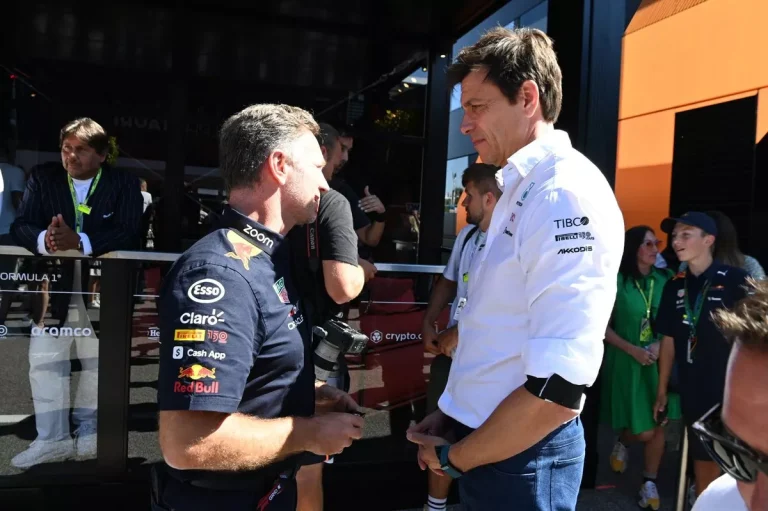Football shoes that exist today are a blend of technology, science, and art. Shoes are not only designed to improve the performance of soccer players, but also look attractive when worn. This is certainly very different from soccer shoes in the past. From time to time, soccer shoes underwent many changes over the times.
The first football shoes ever recorded history originated in 1526. These shoes belonged to King Henry VIII which was discovered by a textile expert from the University of Southampton, Maria Hayward. From this finding, Hayward explained that the oldest soccer shoes have a price of around 4 shillings or worth around $ 100 now.
Football at that time was a sport that did not yet have standard rules. When the game progresses, the number of players can reach hundreds and tend to contain violence. Many kingdoms that then forbade his people to play football at that time. King Henry VIII also briefly banned soccer in 1540.
The first football shoes recorded in history belonged to King Henry VIII
There have been no other findings related to soccer shoes that were used in the past until entering the 1800s. At that time football became a very popular game in England. However, in the early 1800s there were not many specific shoes used for playing football. Most only use work shoes or shoes they use everyday.
Shoes used to play football at this time are usually equipped with iron at the toe. This shoe is very stiff and heavy so it does not make it easy for users to run and kick. Some complement their shoes with metal plates or nails to increase the grip of shoes with the ground. This part is also often used by soccer players at that time to injure opponents.
After the English Football Association (FA) was formed, new rules were made regarding soccer shoes. Rule number 13 is prohibited from using shoes with iron plates or nails in the sole of the shoe. This rule applies until the end of the 1800s before the FA then made new rules.
In 1891, the FA made rules related to the use of nails or what we now often call pul at the bottom of soccer shoes. There are a number of rules related to soccer shoes made by the FA, one of which is not to be in the shape of a runcum and measuring at least 0.5 inches. The goal, of course, is not to endanger your opponent, but it is still useful to make shoes not slippery when running on the ground.
In the early 1900s specific shoes used to play football began to be mass-produced. Football shoes are made of thick leather with a design that covers the ankle. Each shoe’s weight reaches 500gram and becomes even heavier when it is wet. William Shillcock was one of the soccer shoe makers that was widely used by football players in England and Scotland at the time.
Football boots in the early 1990s
Starting from here, shoe companies began to emerge that produced soccer shoes. Some of the biggest names at the time were Gola and Valsport and Hummel. Gola was founded in 1905 which also provided shoes for British soldiers during the world war.
The Dassler brothers began to be known as one of the producers of soccer shoes in 1920. Initially they produced athletic shoes which also had a pul underneath. Their shoes were used by the fastest sprinter in the world at the time, Jesse Owens, at the 1936 Olympics. However, as we already know, the two brothers then broke up a partnership. They finally opened their respective shoe brands, Rudolf Dassler with Puma, and Adolf Dassler with Adidas.
After the second world war, the development of soccer shoes is growing rapidly. In South America, soccer shoes are made with lighter and more flexible material. This aims to make the players more comfortable when running and kicking the ball.
In Europe, the competition of Rudolf and Adi Dassler became one of the triggers for the development of soccer shoes. Adi Dassler introduces soccer shoes with pulses that can be replaced. This shoe then made history when it took the West German team to win the 1954 World Cup.
West Germany met Hungary who at that time was having a golden generation in the presence of Ferenc Puskas and friends. Germany defeated Hungary by 8-3 in the group phase. The two countries then met again in the final round which became known as the “Miracle of Bern”.
The match took place in heavy rain. Score in a 2-2 draw condition when the first half ends. A muddy field makes every player’s shoes full of mud. Adolf Dassler who was then serving as Kit Manager of West Germany immediately acted quickly by changing the shoes of each player of West Germany. At that time, replacing the sole needed a long time and was usually only done when the shoe was damaged.
The latest technology installed on Adi Dassler’s shoes is able to replace the shoe pul in a short time. The result, the German players came out with shoes that were as good as new in the second half. Meanwhile, Hungarian players who use shoes full of mud are very easy to slip while running. West Germany then scored their third goal and won them the championship at the World Cup.
Entering the end of the 1950s the focus of the development of soccer shoes began to change from the soles to the upper leather or so-called ‘Upper’. Football shoes are no longer made by covering the ankles, but are made short to under the ankles. This makes it easy for the players to run faster and move more swiftly.
At this time, air transportation has begun to be enjoyed by many parties. Competition between countries from various continents began often. Football lovers are starting to be amazed by the game of players from Latin America who are very agile and full of art.
This has become the driving force for new models of soccer shoes that no longer cover the ankles. Football shoes are no longer focused on protecting the feet of the players, but rather to maximize the movement of the players. The material used to make pul also uses lighter material so that the player can move more freely.
Science in football has also been growing at this time. Players increasingly realize that different roles on the field certainly require different tools. For this reason, lighter shoes will not necessarily benefit every player. Some players actually need shoes that are more weighty to get firmer kicks.
From here, soccer shoes are made in different shapes. The material used also varies according to the needs of the players. Not only that, there is one other component that is starting to be incorporated into soccer shoes, art.
Previously all soccer shoes were only black or brown. Variation only exists in the shape of the shoe, but still using these two colors. In 1970, in the Charity Shield match between Chelsea and Everton, Alan Ball, who was defending Everton in white shoes.
The white shoes are the result of his collaboration with one of the shoe brands from Germany who wanted to enter the British market at that time, Hummel. Interestingly, in the match Hummel could not provide the form of shoes desired by Ball. Finally, Ball used Adidas shoes which he painted white and made to resemble Hummel’s shoe designs.
Even so, the Hummel marketing strategy is arguably very successful. Commentators have repeatedly mentioned Ball’s white shoes and many close-up photos that lead to ball shoes in various mass media. The result, Hummel sales in England after the match jumped up to double.
In addition to color variations, in 1970 also began the era of shoe sponsorship of soccer players. Pele started a shoe sponsor when using Puma King at the 1970 World Cup. Since then many star players have become very common in the 1990s until now.
In 1971, Nike launched its first soccer shoes. The black shoes and the white Nike logo are not enough to attract the market’s attention. At that time, the focus of the company from the United States was indeed still in running, tennis, and basketball.
Competition in soccer shoes is still held by the two big brands Adidas and Puma. Puma sponsors the two most legendary players in the world of football, Pele and Diego Maradona. Meanwhile, Adidas launched Adidas Copa Mundial, the soccer shoe with the largest number of sales to date.
Adidas Copa Mundial was launched in 1979 and became the biggest selling shoe
Nike just started competing with Adidas and Puma at the 1994 World Cup. At that time the Nike Tiempo Premier Boots were worn by 22 players at the World Cup which took place in the United States. Since then, Nike began to take Puma’s position as Adidas’s competitor in the race for the soccer shoe market.
Both of these brands then continue to compete with the latest innovations in the world of soccer shoes. Adidas launched the Predator touch with a sword-shaped pul model in 1996. Nike then launched the Nike Mercurial as a super lightweight shoe with a weight of only 200 grams.
Competition that still continues until now various types of soccer shoes with their own uniqueness. Until now, these two shoe brands control 70% of the soccer shoe market worldwide.
Entering the millennium era, soccer shoe innovation is increasingly diverse. For pro players, soccer shoes are even made specifically according to the needs of the game and the shape of the player’s feet. Customization begins, where each brand provides shoes with certain players’ labels. This makes the selling price of the brand shoes increases.
Increasingly advanced technology combined with science and art makes soccer shoes very diverse. Each part of a football shoe has its own variations, which provide its own uniqueness. Whether it’s to improve player performance, or design aesthetics. And this development still continues. The latest innovations in soccer shoes will still be born that might not have been imagined at this time.
ASL
















